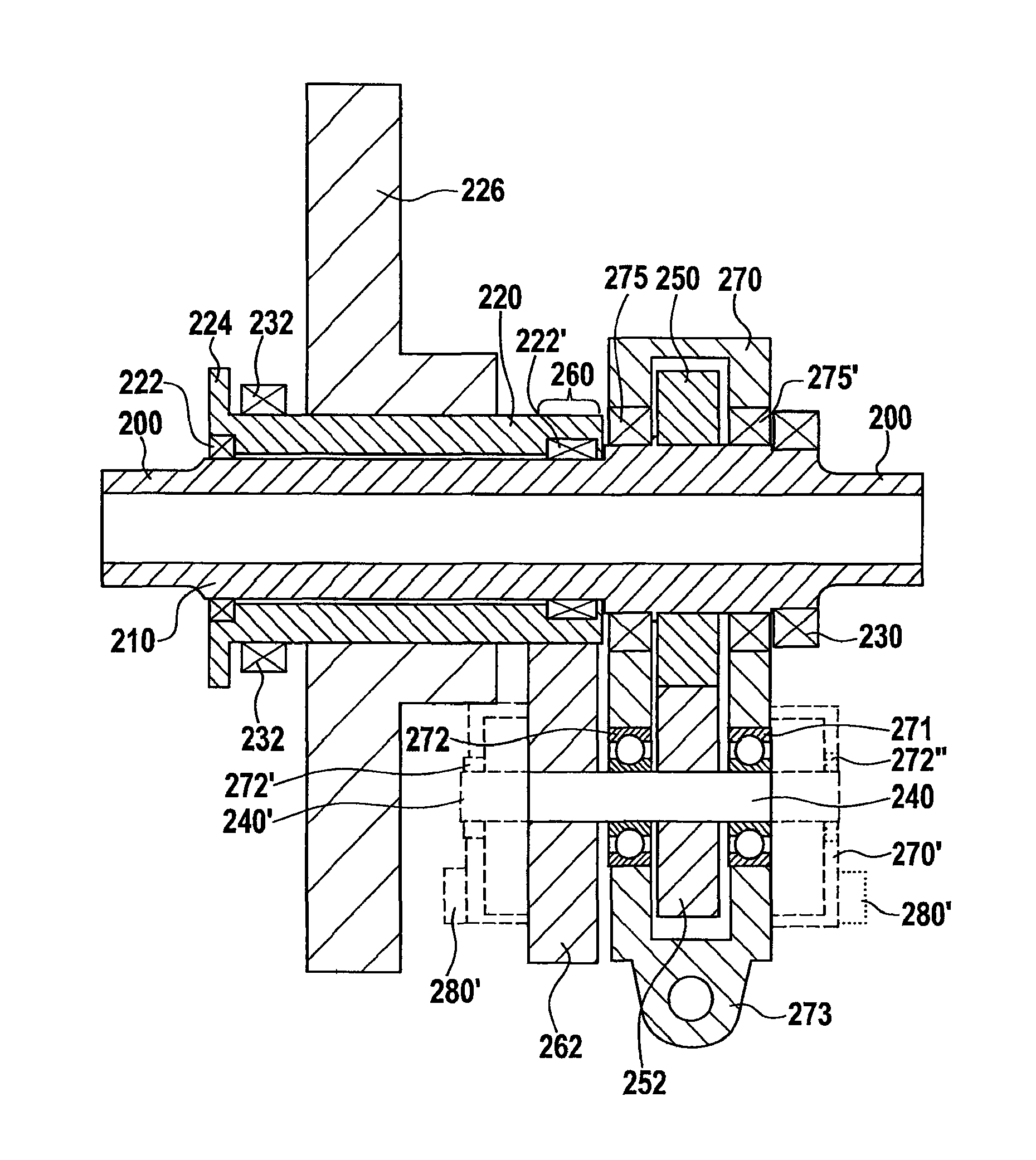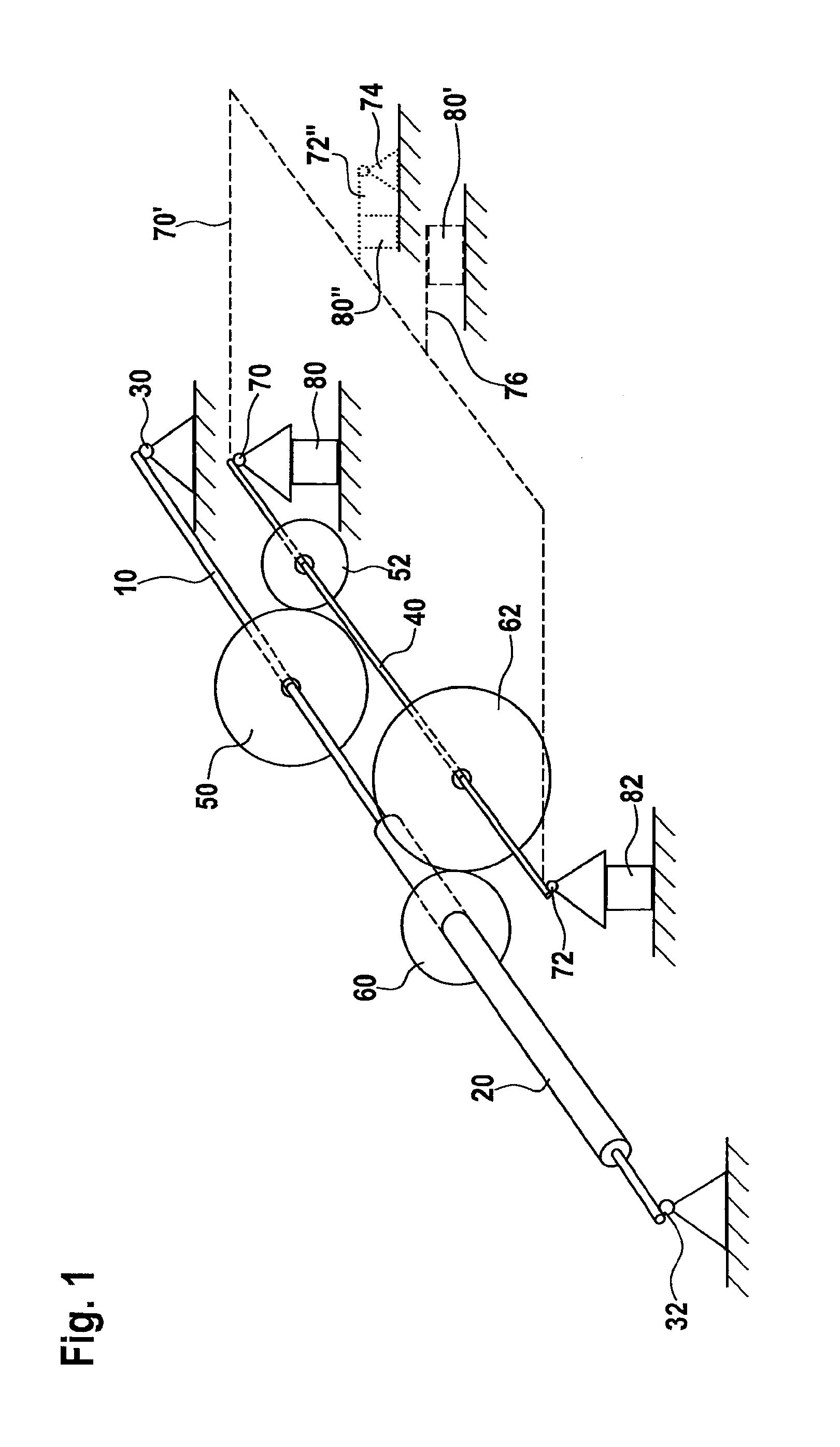Transmission for electric bicycles for detecting a torque and related method for electric bicycles for detecting a torque
a technology of transmission and electric bicycles, applied in the direction of force/torque/work measurement apparatus, simultaneous indication of multiple variables, instruments, etc., can solve the problems of high cost of data evaluation and particularly prone to errors, and achieve the effect of not causing hysteresis
- Summary
- Abstract
- Description
- Claims
- Application Information
AI Technical Summary
Benefits of technology
Problems solved by technology
Method used
Image
Examples
first embodiment
[0035]FIG. 2 shows the transmission according to the present invention, having crank 100, crank shaft 110 which is supported rotatably by bearings 130, 132, in order to be able to carry out a rotation according to arrow 112. On crank shaft 110, drive-side crank drive shaft wheel 150 is situated torsionally fixed and output-side hollow shaft wheel 160 is situated rotatably. Sensor shaft 40 has a drive-side sensor shaft wheel 152 and an output-side sensor shaft wheel 162, which are in engagement with wheels 150 and 160 respectively. The frame has an U-shaped extension, the two opposite legs having the rotary bearings 170′, 172′. The sensor shaft is rotatably supported in a frame 170 by rotary bearings 170′, 172′. The force is measured by a force sensor that is not shown, via which frame 170 is supported. The support not shown, via which the force sensor holds the frame, takes up forces in the tangential direction (with respect to the rotation of the sensor shaft or the pedal crank sha...
second embodiment
[0036]FIG. 3 shows the transmission according to the present invention, having a pedal crank shaft or crank shaft 210 at whose ends fastening elements 200 for pedal cranks are provided. On crank shaft 210, a hollow shaft 220 is rotatably supported via rotary bearings 222 and 222′. The crank shaft is supported on one side by a rotary bearing 230 and on the other side by a rotary bearing 232, which is located on the hollow shaft, via rotary bearing 222 between hollow shaft 220 and crank shaft 210 so that the crank shaft is also supported. Hollow shaft 220 at one end has a radially extending protuberance 224, which provides fastening elements (not shown) for the output drive.
[0037]A frame 270 is fastened on the pedal crank via rotary bearings 275 and 275′, which carries a sensor shaft 240 via rotary bearings 271, 272. On sensor shaft 240, a first wheel 252 (drive-side sensor shaft wheel) and a second wheel 262 (output-side sensor shaft wheel) are fastened, only one of the wheels (wheel...
third embodiment
[0040]FIG. 4 shows the transmission according to the present invention, having a pedal crank shaft or crank shaft 310, on which, at fastening locations 300′, cranks 300 are situated at both ends of crank shaft 310. On crank shaft 310, a hollow shaft 320 is rotatably supported via rotary bearings 222, 322′ that are offset axially with respect to each other. Hollow shaft 320 has at its end, that is opposite to the end of the hollow shaft that faces the sensor transmission, a connecting possibility (in the form of a protuberance 324) for a sprocket wheel 324 for driving a rear wheel of the bicycle. On hollow shaft 320 there is also situated a drive element in the form of a toothed wheel 326, via which an additional torque of a motor is able to be applied to hollow shaft 320. A rotary bearing 332 supports hollow shaft 320 (and consequently also crank shaft 310, and a rotary bearing 330 supports crank shaft 310 at the opposite end of crank shaft 310.
[0041]On crank shaft 310 a crank drive...
PUM
 Login to View More
Login to View More Abstract
Description
Claims
Application Information
 Login to View More
Login to View More - R&D
- Intellectual Property
- Life Sciences
- Materials
- Tech Scout
- Unparalleled Data Quality
- Higher Quality Content
- 60% Fewer Hallucinations
Browse by: Latest US Patents, China's latest patents, Technical Efficacy Thesaurus, Application Domain, Technology Topic, Popular Technical Reports.
© 2025 PatSnap. All rights reserved.Legal|Privacy policy|Modern Slavery Act Transparency Statement|Sitemap|About US| Contact US: help@patsnap.com



